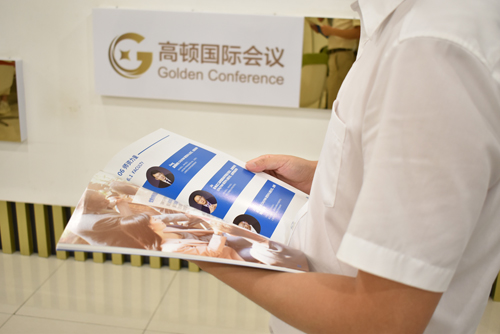
ACCA F6知识点:Partnerships
- 2015年09月02日
- 09:40
- 来源:高顿财经
- 阅读:(183)
2024ACCA备考资料
- 财务英语入门
- 历年考题答案
- 2024考纲白皮书
- 2024考前冲刺资料
- 高顿内部名师讲义
- 高顿内部在线题库
摘要:【高顿ACCA小编】2015年 ACCA 考试即将开始,我们将第一时间公布考试相关内容,请各位考生密切关注高顿ACCA,预祝大家顺利通过ACCA考试。今天为大家带来的...
【高顿ACCA小编】2015年ACCA考试即将开始,我们将第一时间公布考试相关内容,请各位考生密切关注高顿ACCA,预祝大家顺利通过ACCA考试。今天为大家带来的是ACCA F6知识点:Partnerships
本文由高顿ACCA编辑整理,转载请注明出处
1 Introduction
Although a person may be a partner in a firm, he is still a
separate taxable person for income tax (and CGT). The person's share of
partnership profits is assessed to tax as part of his total taxable income for
a tax year.
For self-assessment purposes, the firm produces a partnership
return showing the allocated amounts of income (and gains) for all partners.
Each partner uses this information to complete his individual annual tax
return.
2 Allocations of Trading Profits and Losses
Between Partners
Adjusted profits and losses, determined for the period of account
of the firm as a whole, are allocated between the partners in the
profit-sharing arrangements of that period of account.
Profit-sharing arrangements include the partners' salaries,
interest on contributions to the firm's capital and the profitsharing ratio
that is used to allocate surplus profits.
If the profit-sharing arrangement changes during a period of
account, the profit or loss is time-apportioned between the periods before and
after the change. The profit or loss before the change is allocated according
to the old arrangement; the profit or loss after the change according to the
new arrangement.
Each partner's share of profit or loss will then be used to
determine his assessments under the current year basis (CYB) for each tax year.
3 Admission and Retirement of Partners
When a partner is admitted to an existing firm (or a sole trader
takes in his first partner), the incoming partner is assessed using the current
year opening year rules on his share of the firm's profits. The assessment of
each of the existing partners is unaffected.
When a partner leaves an existing firm, the last year basis
applies to his share of profits only, with relief for his share of accumulated
overlap profits. Again, the assessment basis for the remaining partners is
unaffected.
4 Cessation of the Firm as a Whole
Where the firm as a whole ceases to be assessed to income tax, the
last year basis applies to all the partners with relief given for each
partner's share of accumulated overlap profits.
5 Trading Loss Relief for a Partner
Where a partner has a loss for a tax year he can choose to relieve
his share of the loss in the way that best suits his individual circumstances.
For an established business, this usually means choosing between
the more immediate s.64 relief against total income (with or without s.261 TCGA
1992 relief against gains) and later s.83 carry forward relief against future
shares of trading profit.
All partners of a new firm and a new partner of an existing firm
may claim s.72 relief for attributable shares of a loss of any of the first
four tax years of assessment.
Where a partner leaves a firm and has been allocated a loss prior
to his retirement, he can claim the appropriate form of loss relief, including
s.89 (terminal loss) relief against his share of trading profits for the final
and preceding three tax years of his trade.
If the firm as a whole ceases trading in such circumstances, then
all partners can make a terminal loss claim.
6 Capital Allowances
Assets attracting capital allowances may be owned by the firm
(e.g. office equipment) or by the partners personally and used for business purposes
(e.g. motor cars).
Where these different arrangements exist:
= capital allowances are calculated on both types of assets for
the period of account of the firm (i.e. as normal);
= capital allowances on the firm's assets are deducted as a
trading expense before allocating profits between the partners (note this
applies to all assets owned by the partnership, even if subject to private
use);
= capital allowances attributable to the business use of privately
owned assets are deducted from the share of profits of each partner after
allocation.
7 Limited Liability Partnerships (LLPs)
Limited liability partnerships (LLPs) are separate legal entities
in which the partner's liability for the firm's debts is limited to their fixed
capitals.
本文由高顿ACCA编辑整理,转载请注明出处
推荐:考生都在用的ACCA资料>>【领取2023ACCA完整资料】 (资料包含ACCA必考点总结,提升备考效率,加分必备)
版权声明:
1、凡本网站注明“来源高顿ACCA”或“来源高顿、ACCA学习帮”,的所有作品,均为本网站合法拥有版权的作品,未经本网站授权,任何媒体、网站、个人不得转载、链接、转帖或以其他方式使用。
2、经本网站合法授权的,应在授权范围内使用,且使用时必须注明“来源高顿ACCA”或“来源高顿、ACCA学习帮”,并不得对作品中出现的“高顿”字样进行删减、替换等。违反上述声明者,本网站将依法追究其法律责任。
3、本网站的部分资料转载自互联网,均尽力标明作者和出处。本网站转载的目的在于传递更多信息,并不意味着赞同其观点或证实其描述,本网站不对其真实性负责。
4、如您认为本网站刊载作品涉及版权等问题,请与本网站联系(邮箱fawu@gaodun.com,电话:021-31587497),本网站核实确认后会尽快予以处理。
分享到:
急速通关计划
ACCA全球私播课
周末面授班
其他课程
报考指南
******ACCA备考机经
价值1288元 考试必备资料 免费领取 高顿ACCA研究院******出品
价值1288元 考试必备资料 免费领取 高顿ACCA研究院******出品
领取ACCA资料包
大家都在看
-
阅读(9579)
-
阅读(9083)
-
阅读(9068)
-
阅读(8764)
-
阅读(8739)
日排行 • 周排行
- 1 acca课程体系?acca考试具体内容有哪些?
- 2 ACCA FM | NPV和IRR两大评估方式+对比
- 3 acca考试具体内容有哪些?
- 4 acca考出来对进四大有帮助吗?
- 5 ACCA让我不再迷茫,打开全新视野!
- 6 超详细ACCA报考流程
- 7 ACCA F2重要考点解析
- 8 FA之Provision如何拿满分丨ACCA Cloud
- 9 ACCA知识点:增值激励计划
- 10 ACCA考试科目这盘“大餐“怎么搭配最“营养”
- 1 2023年ACCA考试科目通过率排名:哪些科目最容易通过?
- 2 2024年参加12月acca考试带什么?准考证可以打印了吗?
- 3 2024年accaf1裸考能过吗?历年通过率多少?
- 4 定了!2023年acca要考几年能考下来?要考几科才可以拿出去面试?
- 5 2024年acca要考几门?按什么顺序考?
- 6 2023年申请acca免考科目的条件?最多可以免考几门科目?
- 7 2023年哪些大学财会专业比较好?没错了,就是这几所!
- 8 acca学姐来解答2023年acca是什么考试?各科目全称是什么?
- 9 速看!2023年会计学acca是什么意思?一文教你看懂!
- 10 定了!2023年acca考位满了还有可能报上吗?
-
ACCA考试热门词
-
ACCA内部备考资料高顿ACCA为您免费提供全新ACCA资料,包括历年考题、考官报考、考官文章、考纲解析、学霸笔记、内部讲义等,同时还助您了解新学员报名注册指南、机考报考考试引导、OBU&UOL申请攻略等,点击免费获取。
-
- ACCA常见问题
- ACCA推荐阅读
- ACCA考试资讯
- ACCA原创文章
- ACCA学霸分享
- ACCA常见问答







